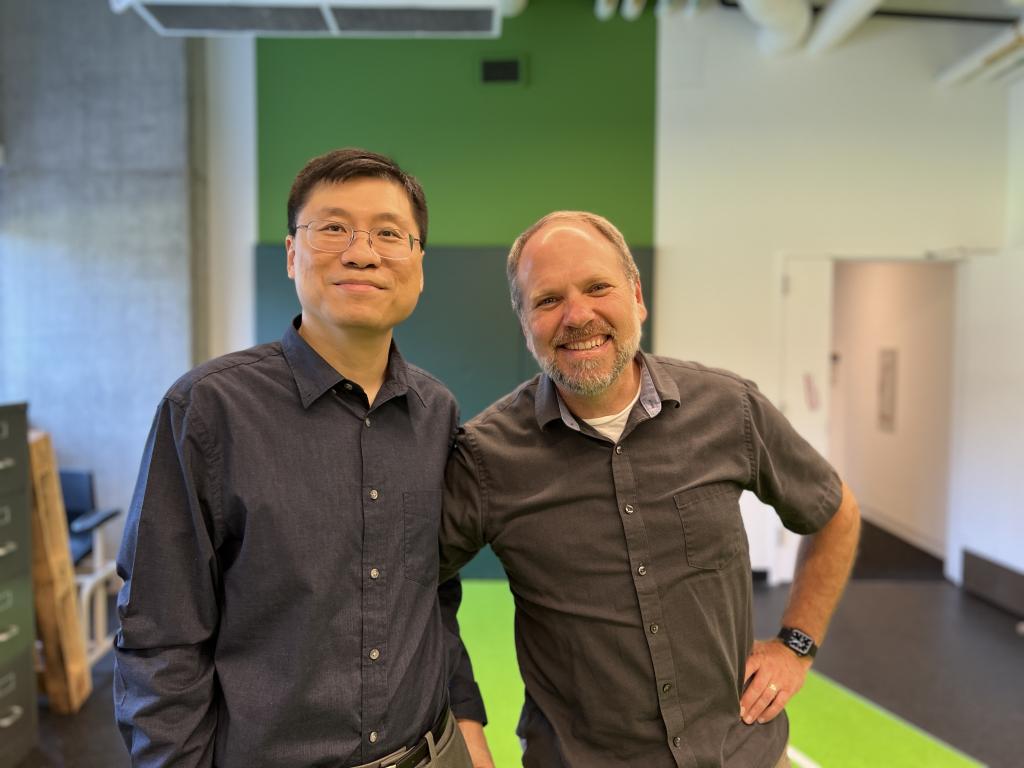
Everyone is built differently. Individuals grow at their own rates and learn in their own ways, so it stands to reason that people heal from injuries at their own pace, too. Considered this way, the fact that recommending healing time for common injuries is often the same doesn’t account for individual differences.
From ligament or tendon tears to bone fractures, not one person recovers in the same way. It’s this knowledge that led Keat Ghee Ong, professor at the Phil and Penny Knight Campus for Accelerating Scientific Impact, to undertake development of implantable sensors that measure environmental cues throughout healing.
If you have ever had a major injury, wondered what exactly happens after implantation surgery, or have been given a questionable time frame for how long the recovery would take, then this new technology will be of interest to you. Ong wants to provide surgeons with precision medicine technology that can tailor the recovery plan to the specific person, rather than solely rely on guidelines.
“Everyone has a different regeneration rate,” Ong Says. “Implantable biosensors [are designed] to provide the optimal treatment for the right patient at the right time.”
Implantable sensors, once inserted, are designed to track how much tissue or bone has been repaired over a period. With this knowledge, medical professionals can keep track of a patient's recovery and determine the road back to health that works for that individual.
Sensors Provide Feedback from Environmental Cues
Ong’s small, flexible sensors measure the environmental cues from a patient's healing process after implantation. It’s his hope that monitoring the quality of bone or tissue regeneration can provide feedback on the type of physical therapy a patient should receive.
“Physical therapy is time sensitive,” Ong said. “In the beginning of injury, you don't want to move too much so your body can heal. At the later stages, you need physical stimulation so your body can grow back strong bone and tissue to prevent a weak joint.”
Although Ong has been developing sensor technologies since his doctoral studies, his passion for overcoming prescriptive healing began when he started his academic career. Not only did he want to help people heal faster after injury, but he also wanted his life’s work to be meaningful and helpful to people outside of the academic community.
Ong began asking patients and surgeons what improvements they want to see in medicine. A major concern was wanting to know what happens after tissues and sinew are sewn back together or bones are reset. These medical professionals wanted to know if healing times could be individualized for greater precision.
From there, Ong began developing a prototype using radio-frequency identification (RFID) technology, similar to that found on some credit cards or library tape stickers. Ong figured he could develop a sensor that can track the physiological data of a healing human the same way a credit card can transmit payment information, or a library sticker can track a book’s usage and prevent theft.
Taking an Innovation to Market
Ong joined the University of Oregon in 2019, and soon after co-founded the company Penderia Technologies with Robert Guldberg, vice president and Robert and Leona DeArmond Executive Director of the Knight Campus. The firm is developing smart implants to optimize physical therapy rehab after orthopedic surgeries such as rotator cuff repair and ACL reconstruction. Ong provides his expertise in implantable wireless sensors and Guldberg offers his experience in orthopedic injuries, treatments, and products. Technical contributors include sensor and startup expert Salil Karipott, and electronics, device, and biomechanics specialist Michael McGeehan. The firm has also enlisted clinical partners and business advisors from other institutions and private industry.
"Our team has a great mix of technological expertise and startup experience," Guldberg said. "Penderia’s implantable sensors will enable personalized rehabilitation for the first time in order to optimize the functional recovery of patients following surgery. The fact that the technology works without requiring surgeons to change their existing procedures makes it more likely to be widely adopted."
Ong notes the importance of the Knight Campus and the UO’s Innovation Partnership Services in helping to launch his company.
“This university and its support are very important to me,” Ong said. “UO is very engaging and very supportive. The Knight campus has a great mission [and] the ecosystem is very good. Because of this, I’m able to focus on my research.”
A Growing Presence in Eugene
As for the future of Penderia Technologies, things are continuing to look bright. The company has developed working prototypes of implantable suture buttons and the wearable device and software, has filed a full patent, and is in the process of securing Federal Drug Administration (FDA) approval for the implant to be used clinically. The company will continue to develop the sensors, and next steps include a clinical trial to prove the technology is safe and effective. Penderia is beginning its search for investors as it grows and expects to file for FDA approval in early 2023, paving the way for implants to be used in patients soon thereafter.
And, in good news for the southern Willamette Valley, though Penderia Technologies is currently situated in the innovation space of the Knight Campus, the company will continue to be headquartered in Eugene as it outgrows the startup facility at the Knight Campus.
“My interest is to develop technology that is groundbreaking” Ong said. “We want to change the paradigm within the medical treatment so that people can experience a different outcome than they did before.”
